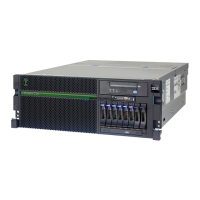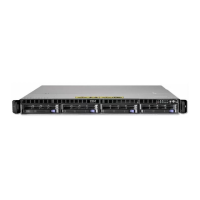Chapter 4. Continuous availability and manageability 173
Repair and verify system
Repair and verify (R&V) is a system used to guide a service provider step-by-step through the
process of repairing a system and verifying that the problem has been repaired. The steps
are customized in the appropriate sequence for the particular repair for the specific system
being repaired. The following scenarios are covered by repair and verify:
Replacing a defective field-replaceable unit (FRU) or a customer-replaceable unit (CRU)
Reattaching a loose or disconnected component
Correcting a configuration error
Removing or replacing an incompatible FRU
Updating firmware, device drivers, operating systems, middleware components, and IBM
applications after replacing a part
Repair and verify procedures can be used by service representative providers who are
familiar with the task and those who are not. Education on demand content is placed in the
procedure at the appropriate locations. Throughout the repair and verify procedure, repair
history is collected and provided to the Service and Support Problem Management Database
for storage with the serviceable event, to ensure that the guided maintenance procedures are
operating correctly.
If a server is managed by a management console, then many of the repair and verify
procedures are done from the management console. If the FRU to be replaced is a PCI
adapter or an internal storage device, the service action is always performed from the
operating system of the partition owning that resource.
Clients can subscribe through the subscription services to obtain the notifications about the
latest updates available for service-related documentation. The latest version of the
documentation is accessible through the Internet.
4.4 Manageability
Several functions and tools help manageability so you can efficiently and effectively manage
your system.
4.4.1 Service user interfaces
The service interface allows support personnel or the client to communicate with the service
support applications in a server using a console, interface, or terminal. Delivering a clear,
concise view of available service applications, the service interface allows the support team to
manage system resources and service information in an efficient and effective way.
Applications that are available through the service interface are carefully configured and
placed to give service providers access to important service functions.
Various service interfaces are used, depending on the state of the system and its operating
environment. The primary service interfaces are the following items:
Light Path and Guiding Light (See “Light Path” on page 170 and “Guiding Light” on
page 170.)
Service processor, Advanced System Management Interface (ASMI)
Operator panel
Operating system service menu
Service Focal Point on the Hardware Management Console
Service Focal Point Lite on Integrated Virtualization Manager
